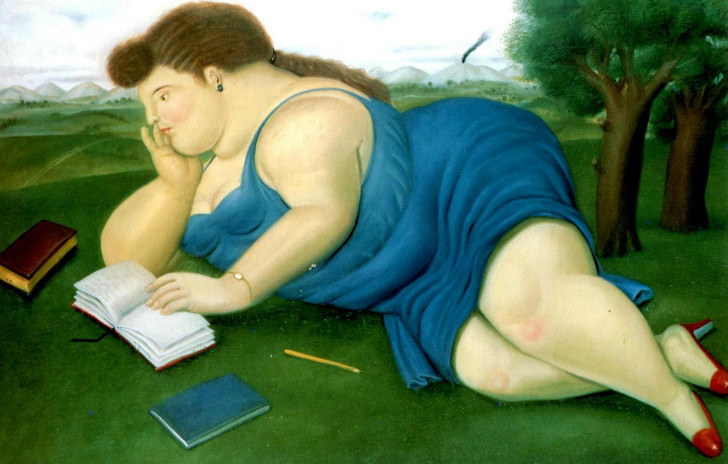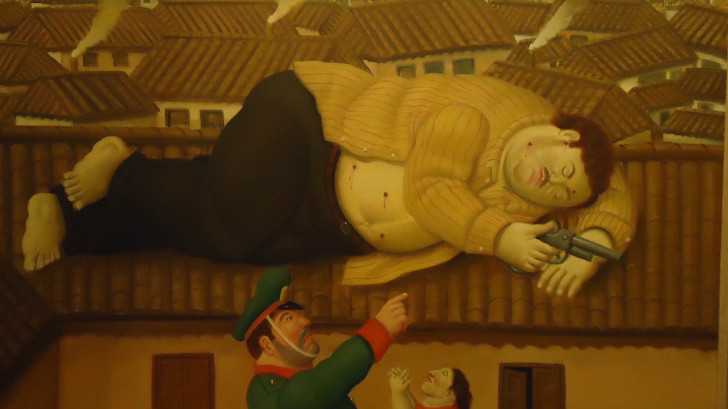The painter who loves fat people the most: Who is Fernando Botero?
The figures in Fernando Botero's paintings have simple and plain expressions that most of us know, and even think we can draw. What makes the paintings special is that the volumes are used exaggeratedly, regardless of the concern for harmonious unity between the figures.

Colombian expressionist painter and sculptor Fernando Botero completed his education at the Royal Academy of Fine Arts in San Fernando, Spain. He opened his first personal exhibition in 1952. Putting fat figures at the center of his style, Botero explains why: “Fat is beautiful because fat people have the ability to immediately put a smile on other people's faces, they are sympathetic, so I use fat figures in my paintings.”
In the adaptations of Fernando Botero, during his travels in Italy and Spain in the early 1950s, he closely examined masters such as Giotto, Piero della Francesca, Leonardo, Mantegna, Velázquez, Goya, Dürer, Rubens, Manet and Cézanne, who were important reference points for him. is observed. By not imitating them in his works, Botero reflects their soul onto the canvas with his unique vision.
Fernando Botero Angulo (born 19 April 1932) is a Colombian figurative artist and sculptor, born in Medellín. His signature style, also known as "Boterismo", depicts people and figures in large, exaggerated volume, which can represent political criticism or humor, depending on the piece. He is considered the most recognized and quoted living artist from Latin America, and his art can be found in highly visible places around the world, such as Park Avenue in New York City and the Champs-Élysées in Paris.
For Botero, still, lifes inspire a fascinating image with a regular continuity starting from the late 1960s. The image in question transcends a simple composition of fruits and objects placed on the table, sometimes revealing a world on its own. In some of these paintings, the feeling of claustrophobia created by the cubic space is overcome by adding a mirror or an opening that makes it possible to look outwards. Botero uses reflections in objects and a door in the background to lighten the architectural setup of the painting, add depth to the painting, and create structural balances. “I know that when I draw an apple or orange, people will notice that this apple or orange is unique to me and that I drew it; because what I'm trying to do is to give each drawn element, even the simplest, a personality that stems from a deep belief.”
The figures in Fernando Botero's paintings have simple and plain expressions that most of us know, and even think we can draw. What makes the paintings special is that the volumes are used exaggeratedly, regardless of the concern for harmonious unity between the figures. Although the method used is criticized by some as being simple, the original expression of the resulting paintings cannot be ignored.
“I dared to draw the bullfight because I knew it very well. If you don't have a strong relationship between a subject and yourself, you can't draw that subject. This relationship is absolutely necessary, as it gives the person a kind of moral authority. I had such a relationship with bullfighting. This connection to the subject came from my blood and my life.” Botero identifies with his subject so much that he immortalizes himself in a matador dress in his self-portrait.
It is possible to see intense reflections of his own culture in the works of the Colombian artist, in which he questions the concept of beauty. Botero said, “In my painting, people encounter a world that I knew in my homeland when I was very young. It's a kind of longing; I made that longing the central subject of my work. I lived in New York for fifteen years and many years in Europe; but it didn't change anything in my temperament, my build, or my Latin American psyche. I am someone who is fully integrated with his country.” says. The background of his painting is the public, the artist's dedication to his own Latin American culture, and vivid memories of images from his childhood. While the life depicted continues with love, songs, and cigarettes in a rosy atmosphere, it also emphasizes the individual's sense of loneliness.
There are also protest paintings by Botero describing the Colombian Civil War or the inhumane practices inflicted in Abu Ghraib prison during the US invasion of Iraq.
Colombian Pablo Escobar starts his career by stealing tombstones, erasing their writings, and selling them again. He learns the border trade while smuggling and then establishes the largest drug gang in the country. Escobar controlled 80% of the cocaine going to the USA at that time, and he was later killed. Botero's painting depicts death.

Fernando Botero, who often spends the winter months in Mexico, started to take an interest in circuses there. Expressing that the circus is a beautiful and timeless subject, Botero reveals the circus life in every aspect of his works. For those who want to go beyond the first glance, Botero's images, which seem funny, ridiculous, and ironic at first glance, are revealed to be loaded with meaning and the circus becomes a great metaphor for life.
